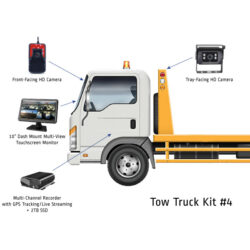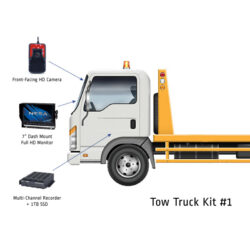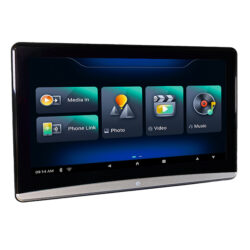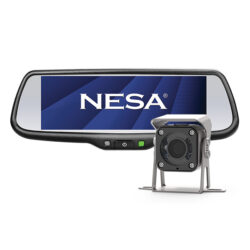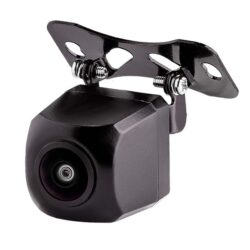We have all seen Dash Cam videos on YouTube and on TV – the funny, the scary and even the bizarre. Previously only police cars had Dash Cams installed, but as prices have dropped, ordinary people have started installing them in their vehicles. In some countries, such as Russia and Korea, millions of drivers have equipped their vehicles with Dash Cams.
If you have ever wondered why you should purchase a Dash cam and what you should look for, this page will help you answer those questions.
What is a Dash Cam?
A Dash Cam is a video camera mounted in a vehicle, typically mounted on the windscreen not on the dash as the name may suggest. These cameras are sometimes called Drive Recorders, DVRs (Digital Video Recorders) or In-Car Cameras. Dash cams continuously record video and audio as well as other information such as speed, location, date and time directly to a memory card, in most cases, a MicroSD card. Most Dash Cams have continuous recording. This means once the available storage is filled, the oldest footage is recorded over. More on recording time vs storage later.
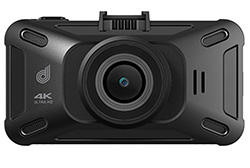
Dashmate 4K Dash Cam (DSH-1200)
Multi-channel Drive Recorder systems have also become cost effective for everyday passenger use. They have up to 4 or 8 channels/camera inputs to utilise 12v cameras like reverse cameras. This also gives you a wide choice of camera qualities and placement options. Multi-channel Drive Recorders typically use an internal hard drive to store recorded footage, but some use multiple SD cards.

A multi channel drive recorder
Why you need a Dash Cam?
There are many reasons why a Dash Cam is a good idea. Here are just a few:
Evidence in case of an accident
When an accident happens, a Dash Cam will provide real proof of what took place. No need to worry about the other party’s version of events. In cases where the other party has an eyewitness in the form of a friend/passenger, they could easily collaborate any old story to pass blame on to you. With a Dash cam, you have video as your witness, and video does not lie.
Insurance fraud
There are some unscrupulous people who will purposely cause an accident then blame the other party. They may try to extort money from the victim or fake injuries to collect payment from insurance companies. It is very easy for someone to back into your vehicle, and then attempt to extort money from you. Without a Dash Cam, you would have no way to prove that you were the victim.
Parking protection
Some Dash Cams offer a parking mode, which through movement sensors, will begin recording if an impact occurs when your car is parked. If someone smashes into your car and drives away, you will have evidence of the hit and run. The Dash Cam must be hard-wired into your vehicle for this to work.
Vehicle abuse and misuse
Do you ever worry when other people drive your vehicle? When handing over your keys to a valet or mechanic, you will know exactly how your vehicle was treated. If your kids drive the car, you can see how they have been driving. Dash Cams with GPS will even provide the route and speed.
Report bad drivers
With roads getting busier, it seems that the number of bad drivers is increasing. Video evidence from a Dash Cam can be used to report hoons, dangerous drivers and road rage incidents. Dash Cam video provides real proof of what happened.
There’s so many Dash Cams on the market, how do you choose?
These days, a Dash Cam can be purchased for as low as $60, but like many things in this world, you get what you pay for. Cheap Dash Cams are often unreliable, are of poor build quality and record very poor video quality. There is no point trying to use Dash Cam footage as evidence if you cannot even read the offenders licence plate number. Websites such as eBay and Alibaba are flooded with these poor quality budget Dash Cams. These cheap Dash Cams may seem like a good idea at the time due to low cost, but if the video is not usable, then they are not such a great deal after all. In fact, it could end up costing you.
Here is what you should look for:
Video quality
This typically is the number one criteria when selecting a Dash Cam. When purchasing a Dash Cam, it is important to get one that records high-resolution video – at least Full HD 1080p. Now days Dash Cams are available with 4K video resolution. Some vendors are not truthful regarding video quality and advertise their Dashcams as HD when in fact they are only Standard Resolution or 720p. Even though 720p is technically HD, this can be deceiving as consumers think they are Full HD 1080p. 720p HD Dash Cams are still be very disappointing in regards to video quality, particularly at night or in poor light conditions when needed most.
It is important to keep in mind, Full HD video of an accident or other incident, is clearer and details like licence plates are easier to read. This could be the determining factor in an insurance or court case. For a comparison between Standard (720p), Full HD and Super HD, see our video below and you will see this for yourself. This video was produced before our 4K Dash Cam was available so it is not featured.
Video best viewed in full screen in 1080p HD mode
Low light video quality and WDR (Wide Dynamic Range)
Along with Full HD quality, another important thing to look for in a Dash Cam is the quality of video recorded at night or in low light situations. If a Dash Cam is not capable of recording decent, visible video during the hours of darkness, it is as good as useless. Many serious accidents and hit and runs take place at night.
Dash Cams with Wide Dynamic Range can record greater scene details, from shadows to highlights. WDR improves video quality when light intensity is widely different. When filming both dark and light locations at the same time most cameras can only reproduce details from one area but not both simultaneously, WDR makes it possible to record more detail in these contrasting areas. WDR increases the capacity to view license plates at night. Plates are often reflective and in combination with dark streets make for a challenging scenario without WDR.
In the video below, you can see that the Full HD Dash Cam is good at night, but does not have the WDR feature. It relies on the lens aperture alone. Both the Full HD and Super HD models shown here have an aperture of f2.0, but with the WDR feature enabled on the Super HD model, you can clearly see a big difference in low light video quality. Most 4K Dash Cams will also have WDR. Some Full HD models (including the model used for this video) incorporate infrared LEDs to add some illumination in low light. However, the effective range of IR lighting is limited to a few meters.
Video best viewed in full screen in 1080p HD mode
Processor and Sensor
Many Dash Cams advertise what processor the camera is based on. The processor is the CPU of the camera. The most widely used processor brand in Dash Cams is Ambarella. One of the best processors, is the Ambarella A7L. This CPU can process video up to an impressive 2304 x 1296 dpi @ 30fps or 1920 x 1080 @ 60fps , compared to the previous model, which records up to 1920 x 1080 @ 30fps, as found in the Full HD Dash Cam. Many Dash Cams on the market are only 25fps. The frames per second (fps) produces smoother video at higher frame rates. 25fps can look very staggered or glitchy, while 30fps is nice and smooth. While the processor is important, the quality of the CMOS sensor and lens are key as well. This is why different Dash Cams with the same processor can have dramatically different video quality. There are some Dash Cams on the market that use the Ambarella A7L, but due to a poor quality CMOS sensor, produce what is known as “over-sharpening” which makes the video image look pixelated and not smooth as it should be. One of the best CMOS sensors is the Sony Exmor which is used by a handful premium Dash Cam manufacturers.
GPS logging
GPS logging utilises a satellite link to record your location and speed for the duration of the journey. The Dash Cam software provided allows you to view the actual footage of the road and follow the vehicle location and speed at the same time. This adds an extra layer of evidence to any scenario you may find yourself in. In fact, there are documented cases of individuals fighting speeding fines with the use of GPS logging.

GPS antenna
There are a few different ways GPS antennas are integrated into Dash Cams; internal, external and dock/mount integration. GPS antennas require good line-of-sight to the satellites in orbit. If there is not a clear line-of-sight, a GPS signal cannot lock in.
External antennas are perfect if your vehicle has dark tinting or film along the top of your windscreen, as this can interfere with the GPS signal. An external antenna can be mounted in a place on the dash where it has a better line-of-sight for a good GPS signal.
Internal antennas are preferred by most, as they do not have an extra unsightly cable running along your windscreen. However, a Dash Cam with an internal GPS antenna must be positioned with good line-of-sight for a clear GPS signal.
Dock/mount integrated antennas are internal but are built-in to the dock, not the Dash Cam. These are usually found on high-end Dash Cam. The dock/mount is connected to the power also so the Dash Cam can easily be swapped from car to car without having to align or set up each time.
Crash sensor (G-sensor)
A G-sensor (gravity sensor) detects an impact and automatically protects the recorded file, so the Dash Cam’s cycle recording cannot overwrite it. These protected files are usually stored in a separate folder on the memory card. These protected files are usually stored in a separate folder on the memory card. In many cases these protected files can only be deleted from the memory via a computer.
Screen display
Some smaller Dash Cams do not have a screen to display the current footage. A screen is not absolutely necessary, the camera will still provide the same level of protection. However, a screen display can be quite useful in the event of an accident. The Dash Cam can be removed from the vehicle (battery life usually lasts 1-2 hours) and used to show other parties (including Police) at the scene, exactly what has occurred.
A screen display is also very useful in setting up the Dash Cam to make sure it is level, there is nothing obscuring the lens and to see the exact view to be recorded.
Storage
Typically, 2-3 minutes of HD video require 100 MB of storage space on a Full HD Dash Cam. However, varying levels of HD video quality will make a difference. 32Gb MicroSD card will store approximately 7-8 hours of video from a Full HD Dash Cam, about 5-6 hours from a Super HD. But with the newer 4K Dash Cams we have found that a 32GB card will only record about 2 hours of video due the high resolution. You can usually get a little more recording time with audio disabled, recording video only. You can later transfer the files to another storage medium for editing or uploading.
Heat Resistance
Heat resistance is an often-overlooked feature of a quality Dash Cam, however it is extremely important to be aware of. Most Dash Cam sit between the windscreen and the rearview mirror. In this position, the camera is exposed to not only harsh sunlight, but to the heat created by the greenhouse effect inside of the car. These extreme temperatures can cause the electronic components of the camera to fail and cause cracked housings. In a short period of time, a perfectly fine camera might wind up as a piece of junk. Many cheap, budget cameras do not feature heat tolerant parts.
Conclusion
Many drivers are realising that a Dash Cam is a useful tool. While a number of insurance and court cases have been resolved and even avoided with Dash Cam footage, some lawmakers are thinking that they should be more prevalent among drivers. Some people are even attempting to use Dash Cam footage to mitigate speeding fines. Whatever people use them for, Dash Cams grow in popularity each day. We hope this guide has been useful to you and given you a solid understanding of which features are best and how you use them.

